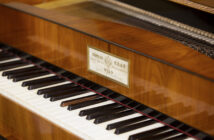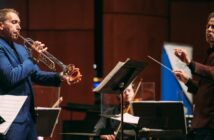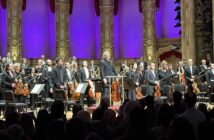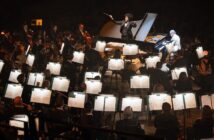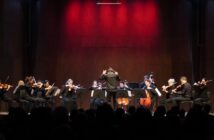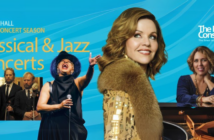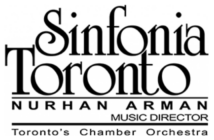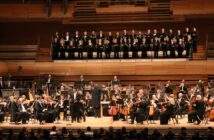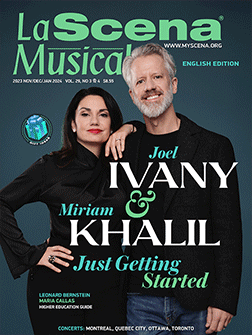
This page is also available in / Cette page est également disponible en:
![]() Francais (French)
Francais (French)
Conductor David Briskin is a powerhouse. Throughout his career, his remarkable leadership in the world of ballet has made him a bridge builder—forging relationships and respect, wordlessly, using only music and gesture. Members of the orchestra cannot see the dancers on the stage, who respond to the music they hear coming from the orchestra pit. The result is a unified experience that bridges the world of music and movement.
Maestro Briskin will seamlessly weave it all together, as he has previously done with the National Ballet, The Royal Ballet, the American Ballet Theatre, the New York City Ballet, the Royal Danish Ballet, and many other companies around the world. The story is Pushkin’s Eugene Onegin, a tragic portrayal of the human condition, as told by John Cranko and orchestrated by Kurt-Heinz Stolze.
We met in Briskin’s office at Queens Quay in Toronto, the home of the National Ballet. On his desk sat a stack of scores, which he is preparing for the upcoming season.
Onstage and off, Briskin exudes honesty and humility. During his tenure, he has steadily raised the quality of the National Ballet Orchestra, to both public and critical recognition. He has been involved with the company since 2001, and has been Music Director and Principal Conductor for 17 years. He chose Toronto as home after more than 23 years based in New York City, conducting orchestras across North America.
Is it challenging to repeat and revise audience favourites such as Onegin, Swan Lake and The Nutcracker?
Briskin: Because building and engaging with our audience in a meaningful way is such an important part of what we do, we are very lucky to have productions (in our repertoire) that are familiar and reach across generations. When Nutcracker season comes around every year, I remind myself that our production is a gateway to introducing new audiences of all ages to the world of ballet. Before I come into the orchestra pit, I love to look out at the audience and see all the families and young faces who are so excited to be seeing Nutcracker, some for the first time.
What makes Onegin’s musical components so distinctive?
Kurt-Heinz Stolze arranged and orchestrated the score for Cranko’s Onegin based on a selection of Tchaikovsky’s piano works, the opera Cherevichki, as well as an excerpt from his tone poem, “Francesca da Rimini.” Stolze quite deliberately avoided using music from Tchaikovsky’s most celebrated opera, Eugene Onegin.
A stroke of genius and imagination, Stolze sets the climax of the ballet—the Act 3 pas de deux between Tatiana and Onegin—to an excerpted arrangement of “Francesca da Rimini,” based on a section of Dante’s “Inferno” in his epic, the Divine Comedy. In these passages, historical figures overcome by sexual desire come to an unhappy ending. In this climactic pas de deux, narrative, emotion, dance, and music are woven into an exquisite tapestry, which leaves the audience overwhelmed as the curtain drops. I can’t help but think that Stolze was aware of this connection when he chose this music to close the ballet.
The final pas de deux ends in an outpouring of grief over missed opportunities and unforeseen consequences. How does the music help illustrate this?
Stolze’s treatment of Francesca is very episodic, beginning with a haunting melody for solo clarinet which is then repeated by the full orchestra. With each statement of the theme, one can hear the emotional tension building. Through his choreography, Cranko brilliantly uses this music to transform personal loss into something bigger and more universal during the pas de deux. This is what makes the ending of Onegin one of the most effective and dramatic in all of narrative ballet.
As conductor of the ballet orchestra, your reputation achieving collaboration between the dancers, the choreographer, and the orchestral musicians is widely recognized. What is your approach?
I’ve always thought of the conductor of an orchestra not as the person who dictates, but as the final point of connection, like an electrical conductor—the piece of circuitry that connects all the musicians in the orchestra pit with the dancers on stage, and with the audience, making sure that the musical, emotional and dramatic energy is always vibrant and alive.
Conductor David Briskin and the National Ballet of Canada will perform Eugene Onegin at the Four Seasons Centre for Performing Arts, in Toronto, from Nov. 22-26.
www.national.ballet.ca
Playlist
This page is also available in / Cette page est également disponible en:
![]() Francais (French)
Francais (French)




